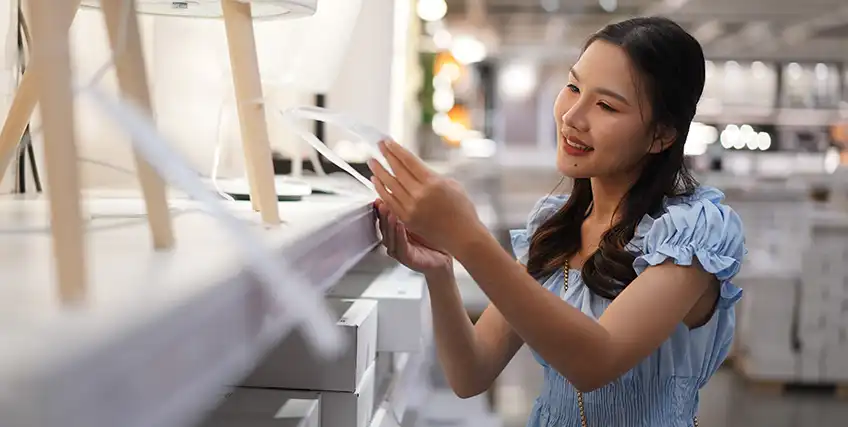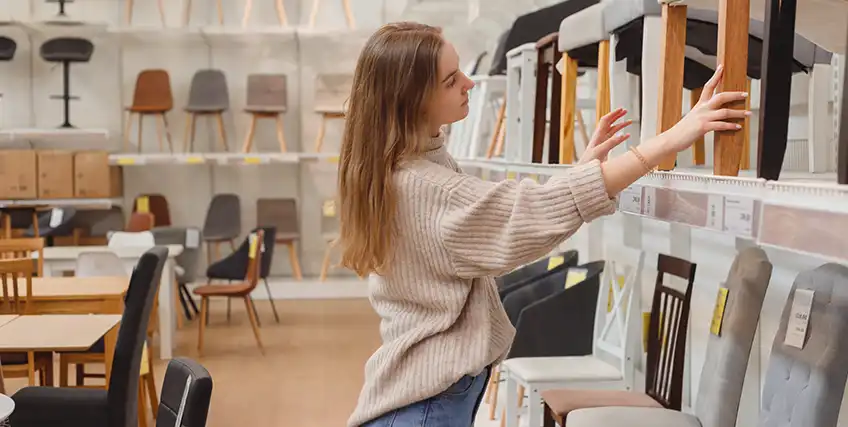From Startup to Success: Financing Your Interior Decorating Business
May 02, 2025 | Last Updated on: May 05, 2025

Interior design is a growing field, with revenues expected to increase to more than $58 billion by 2032. More people are hiring designers to improve their homes and workspaces. If you want to start your own interior design business, you need a plan and money to make it happen. This in-depth guide will show you what you need to get started, how to find clients, and possible funding sources to launch your interior decorating business.
Evaluating Your Business Model
Start by choosing your small business setup. Decide whether you want to work alone as a freelancer, build a team, or run an agency. Think about whether you will work from home or rent a studio. Many aspiring business owners start out of their home, then expand into office space as their revenues increase. As your business matures, you could invest in real estate by buying a building for your interior design business to operate out of.
Next, choose how you want to earn money. You can charge hourly rates for your design time, offer flat fees for full projects, or earn commissions on furniture and materials.
Pick a business structure that suits your needs. While a sole proprietorship is easy to set up, it offers no legal protection. A limited liability company (LLC) protects your assets and can appear more professional to clients. Many small business owners start as a sole proprietorship, then establish an LLC or S-Corp as their business grows.
Understanding the Potential Earnings
Interior designers earn different amounts based on their location, experience, and services. Many interior staging companies focus on consumers, while others become an interior designer for business offices, stores, and other commercial locations. For example, staging homes for sale has become a popular way to attract potential homebuyers.
Entry-level designers often earn between $58,000 and $83,000 per year. Experienced designers can make up to $100,000 per year, while those working on luxury or commercial projects can make substantially more.
To increase your income, consider specializing in a niche such as kitchen design or eco-friendly interiors. Working with commercial clients or taking on large-scale projects can also raise your earnings.
Initial Investments for Starting an Interior Design Business
You’ll need several tools and resources to launch your interior design business. On average, you can expect to spend $3,750 to $10,000 on startup costs.
Design software like AutoCAD or SketchUp helps you create layouts and visuals. Adobe Creative Suite is useful for mood boards and presentations.
Your office setup should include a high-performance computer, a printer and scanner, and reliable internet service. You’ll also need a phone and a professional email address.
You can choose to work from a home office to save money, or rent a studio or co-working space for a more professional setting.
Creating a strong portfolio is essential. Build both an online and a printed version to show potential clients. Hiring a photographer to capture your finished projects can help you stand out. Set up a professional website and post regularly on social media to reach potential clients.
Finding and Attracting Clients
Finding clients is key to your success. Start by identifying your ideal client. Do you want to work with homeowners, businesses, or property managers? Will you focus on new builds or remodeling projects?
Networking can help you grow your client base. Attend local business events, home expos, or trade shows. Join industry groups like ASID or IIDA to meet other professionals and gain credibility.
Online marketing is essential. Post your work on Instagram and Pinterest. Share design tips in blog posts. Make sure your website is optimized so people can find you through search engines.
Encourage happy clients to refer you to others. A simple thank-you or small gift can go a long way in building word-of-mouth marketing.
Financing Your Interior Design Business
You may need help covering your startup costs. There are many funding options to launch your new business.
Personal Savings
Using money from your bank account to open a design firm is the most direct approach. You won’t owe interest or have repayment deadlines. But if your business struggles, you could quickly blow through your savings, leaving you without an emergency fund to cover the monthly payments for your personal and business expenses.
Term Loans
A term loan is a lump sum of money from a bank or lender. You repay the small business loan with interest over a set period.
Traditional loans like this work well if you have a solid business plan and need a large amount to cover big expenses like office space or equipment.
Business Lines of Credit
A business line of credit gives small business owners like you flexible access to funds. You only pay interest on what you use. However, the interest rates are variable, which can increase your monthly payments in a rising interest rate environment.
It’s good for managing cash flow, covering small gaps, or funding short-term needs like marketing pushes or seasonal dips in income.
SBA Loans
Small Business Administration (SBA) loans are backed by the government. They offer lower interest rates and longer terms than many conventional term loans. With this government backing, lenders are able to approve borrowers with less-than-perfect credit.
They’re a strong option if you qualify, but the application process can take longer and requires detailed paperwork. SBA loans often require a personal guarantee and a lien against your most valuable assets, like your home.
Home Equity Loans
Instead of traditional business financing, you can use the equity in your home as collateral to fund your interior design business needs. This can give you access to lower interest rates since the loan is secured by your home. Home equity loans have fixed monthly payments and interest rates, while home equity lines of credit (HELOCs) have variable interest rates. If you don't use your HELOC, there are no monthly payments, and you can use your credit limit repeatedly as you pay down your balance.
A home equity loan or line of credit is risky. If your business doesn’t do well and cannot make the monthly payments, you could lose your home. Make an informed decision before risking your home to start an interior design business.
Investors
When starting an interior design company, you can seek funding from family, friends, or local investors. They may give you cash in exchange for a share of your business or future profits.
You’ll need to present a clear and convincing business plan. Be prepared to give up some control over business decisions. Whether you borrow money or give them equity, keep in mind that mixing business and your personal life can lead to problems if the business fails. They may harbor negative feelings for years, which can make gatherings challenging and impact relationships.
Focusing on investors with whom you don’t have a personal relationship may be the right approach. Besides the monetary investment, investors may also offer professional guidance and referrals to boost your interior design business.
Crowdfunding
Crowdfunding platforms like Kickstarter or Indiegogo let you raise money to start your own business from many small backers.
You’ll need to offer something in return, like early access to your interior design services or a complimentary or discounted design consultation. A strong story and visuals can help attract supporters.
Grants and Competitions
Some nonprofits, arts councils, and small business programs offer grants. What makes these most appealing is that you don’t need to repay them. However, they often have strict rules and deadlines in order to qualify.
Pitch competitions are another option. If your idea is unique and well-presented, you might win funding or mentorship.
Preparing for a Loan Application
Lenders want to see that you’re serious and financially responsible. Taking time to prepare will improve your chances of getting approved.
Credit Score
Start by reviewing your credit score. Correct any errors and take steps to boost your score before applying for a loan for your interior design business. A higher score shows lenders that you manage your money well.
Pay down credit card balances and avoid taking on new debt. Make all payments on time. If your score is low, work on improving it before applying for a loan.
Financial Documents
Gather your personal and business financial documents. Lenders often ask for:
- Tax returns (last two years)
- Bank statements
- Personal identification
- Proof of assets or collateral
You should also have your business licenses and tax ID ready. Keep everything organized and easy to access.
Business Plan
A business plan shows lenders that you’ve thought through your strategy. Include an executive summary, your target market, your services, and how you plan to grow.
Add a detailed financial section that projects revenues, expenses, and profits. Show how much money you need, how you’ll use it, and when you expect to repay it. The length of the financial projections should match the term of the loan.
Managing Cash Flow and Scaling Your Business
Once your business is up and running, managing your money is critical.
Track your income and expenses using tools like QuickBooks, FreshBooks, or Wave. Set clear payment terms with clients. Ask for deposits before starting a project and set milestone payments for larger jobs.
Plan for slow months by saving a portion of your income and offering seasonal deals to attract new clients.
Create a steady income by offering retainer plans or selling digital products such as templates or design guides. If you’re turning away work, it may be time to hire help or outsource tasks like bookkeeping or website management.
Set aside money for growth. Reinvest in better tools, stronger marketing, or expanded service offerings.
The Bottom Line About Interior Design Business Financing
Starting an interior design business takes effort and thoughtful planning. Use this guide to map out your path. Make decisions based on your goals, skills, and market. Take it one step at a time, and track your progress to compare your actual results against the projections in your business plan. With the right financial plan and adequate funding, your interior design business can grow into something strong and lasting.
Frequently Asked Questions (FAQs)
How Profitable is an Interior Design Business?
Gross profit margins for an interior design business typically range from 35% to 40%. After factoring operational expenses, typical small business interior design firms achieve a net profit of 20% to 30%. Adding new clients while keeping a close watch on expenses will help your new business reach your financial goals.
How to Finance an Interior Design Startup?
Unlike retail stores and manufacturing, starting an interior design business doesn't require significant capital. Many interior decorating business owners start on a shoestring budget, then purchase additional software and decorating items as needed to complete customer projects. To finance your interior design company, you can use your personal savings, take out a loan, or tap your home equity.
Does an Interior Designer Need an LLC?
Starting a limited liability company (LLC) is a wise choice to protect your personal finances if the company is sued. Forming an LLC costs money and may impact how your profits are taxes. For this reason, many interior design businesses start as sole proprietorships or partnerships, then convert to an LLC as their revenues justify the expense.
Can You Be a Millionaire From Interior Design?
With large profit margins, it is possible to create a successful interior design business. While not everyone is this successful, over time, you can grow your business and possibly become a millionaire by consistently growing revenues, controlling expenses, and making smart investments in your business.
Do Interior Designers Need Business Insurance?
An insurance policy is not required to open an interior design business, but some customers may require insurance to win the contract. Having adequate insurance protects you and your workers, customers, and suppliers, and others at the job site. There are many different types of business insurance, including general liability, workers' compensation, professional liability, and others.




